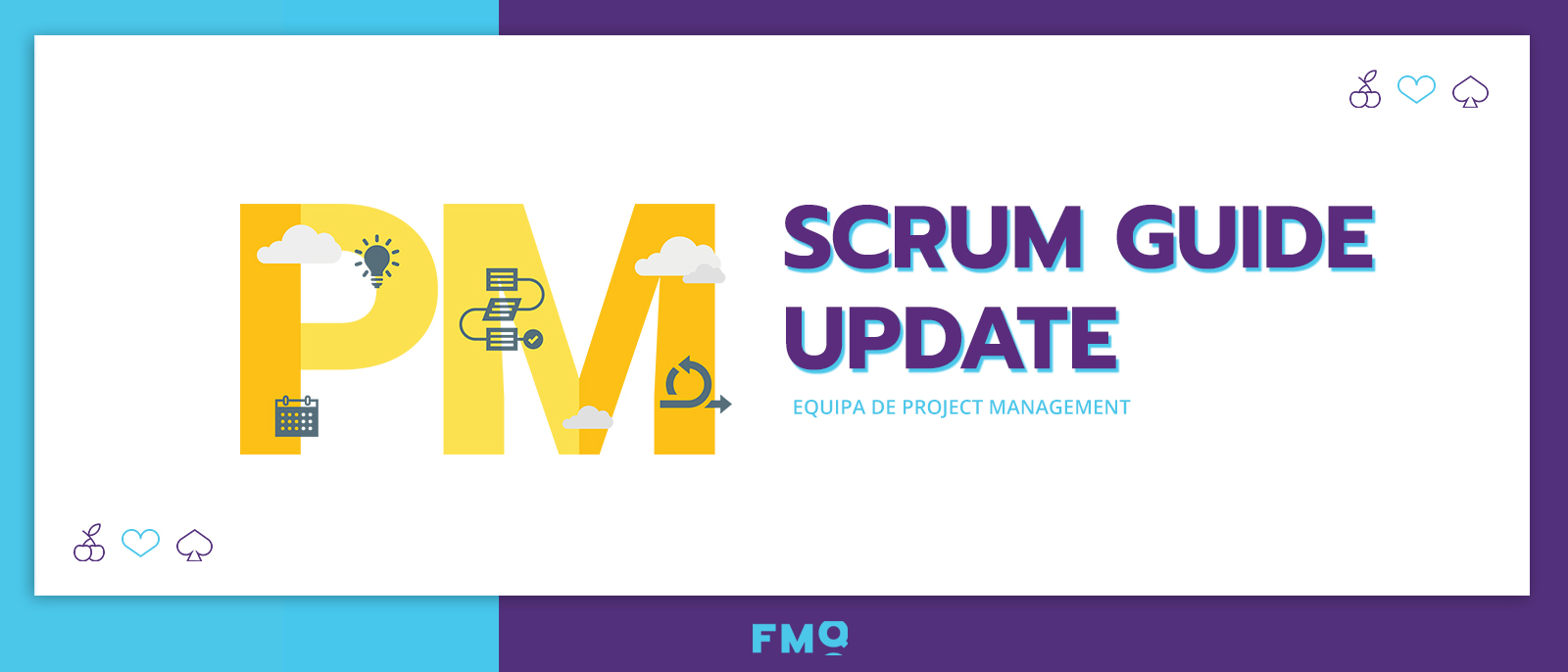Update Scrum Guide: What's changing and what's out!
The Scrum Guide is the guideline for using the Scrum framework. This document will be 25 years old in 2020 and was updated on 18 November, resulting in several entries and exits in the document. At Fabamaq, as is the case with many technology companies, we apply this framework on a daily basis and so we kept an eye on what has changed. Our Project Management team has therefore decided to highlight what has changed and what has come out of the document following these changes:
10 CHANGES TO THE SCRUM GUIDE
1 - Scrum is recognised as a Lean Thinking process.
2 - The Scrum Team is a single team. The Development Team no longer exists, and the Scrum Team now includes Development + Scrum Master + Product Owner (remembering that development is all the elements that deliver improvements to the product).
3 – The Product Owner and Scrum Master figures can participate in the daily. However, they should only speak if they are carrying out something for the delivery.
4 - The word "estimate" is no longer used, but instead will be used the word "size".
5 – We move from two Sprint Planning topics ("What" and "How") to a three-topic structure:
Why: why does Sprint Planning generate value? The Sprint Goal.
What: what are we going to do to achieve that Sprint Goal?
How: the team collaborates in building a plan, even getting "hands-on" to build the Issues, for example.
6 - Product Goal: the purpose of this is to clarify to the team what they are delivering - "the big goal". Thus, all the sprint goals, in the end, make up the Product Goal. This update, according to Ken Schwaber and Jeff Sutherland, aims to clear the "fog" for the tactical and action team about what the company's management wants from the product.
7- Commitments of the artefacts: Product Backlog, Sprint Backlog and Increment. Each artefact must be tied to its final commitment, meaning that a Product Backlog must become a Product Goal, a Sprint Backlog must become a Sprint Goal and an increment must become a Definition of Done (DoD). Following this logic, several DoDs also form a Sprint Goal and several Sprints Goals together deliver a Product Goal.
8 - Self-Organising is losing its prominence to Self-Managing. Previously, the team decided "who" and "how" the Sprint Backlog would be worked on. Now the guide suggests that the team decides who will do it, how they will do it and what they will do, while maintaining their commitment to the Product Goal.
9 - The entire Scrum Team is responsible for the increment. The commitment is the same for everyone.
10 - The Scrum Master is clearly responsible for the team's effectiveness.
WHAT DOES THE SCRUM GUIDE NOT COVER?
1 - Development terms such as deployment processes and this type of vocabulary. This is intended to universalise the use of the framework.
2 - The three questions in the daily - "What have you done?", "What are you going to do?" and "Do you have any impediments?" - were already just a suggestion. Now this suggestion is out of the picture so that each team can carry out the daily as they see fit, with it being a daily alignment ceremony.
3 - Product Backlog attributes - description, order, value and estimate - are now mandatory. This update also aims to universalise the use of Scrum, favouring the use of the framework in non-software products.
4 - Limiting the size of the team to between three and nine dev team members. The guide suggests that the team should have 10 or fewer members, but there is no longer a limitation.
CONCLUSIONS
The update has made the Scrum Guide more flexible and shorter. The book has gone from 20 to 13 pages, a change that makes perfect sense in line with the philosophy of the framework itself. There has been no paradigm shift, nor anything that would require us to change our routine in any major way. The overall tone of these changes is one of common sense and maturity.
Fabamaq is a technology company based in Porto that has been developing casino games around the world for more than 10 years. To find out more about our culture click here.



